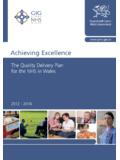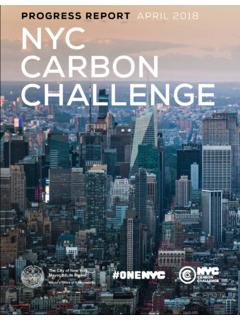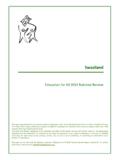Transcription of Achieving Kindergarten Readiness for All Our Children Pht ...
1 Collaborating to accelerate social impactPhotos: Ounce of Prevention FundAchieving Kindergarten Readiness for All Our ChildrenA Funder s Guide to Early Childhood Development from Birth to FiveBy Pritzker, Jeffrey L. Bradach, and Katherine KaufmannPhotos: Ounce of Prevention Fund2 About the Pritzker Children s InitiativeThe Pritzker Children s Initiative (PCI) has been laser focused on a single, attainable goal: that all at-risk infants and toddlers in the United States will have access to high-quality early childhood development resources, increasing their likelihood of success in school and life. PCI is a project of the and Pritzker Family Foundation, which supports effective solutions to societal needs in four areas: early childhood, community healthcare and women s health, civil rights, and entrepreneurship.
2 Our goal is to catalyze change that will fight poverty and promote equity and fairness nationally and in our immediate community of The Bridgespan GroupThe Bridgespan Group ( ) is a nonprofit adviser and resource for mission-driven organizations and philanthropists. Bridgespan collaborates with social sector leaders to help scale impact, build leadership, advance philanthropic effectiveness, and accelerate learning. Through its work, Bridgespan focuses on issues related to society s most important challenges and breaking cycles of intergenerational poverty. Bridgespan s services include strategy consulting, leadership development, philanthropy advising, and developing and sharing practical Schoenberg ( and Pritzker Family Foundation), Elise Tosun (The Bridgespan Group), Christina Triantaphyllis (Collaborative for Children )Copyright 2015 and Pritzker Family Foundation and The Bridgespan Group3 Table of ContentsForeword.
3 4 Highlighted Support for Early Childhood Investments ..7 Summary of Philanthropic Opportunities ..8 Part I: What does the research tell us about the importance of early childhood development? What do we know about what works? ..10 Part II: What outcomes matter most for very young Children ? ..15 Part III: What are the immediate barriers to Achieving better outcomes for low-income Children ? ..21 Part IV: What are the most effective investments philanthropy can make? ..30 Strengthen public systems of early care and education at state and local levels to ensure continuous quality improvements..30 Scale health and developmental screenings to connect parents and families with resources to optimize their Children s holistic development..32 Improve the training, continuing education, professional development, and compensation of early childhood educators.
4 36 Support greater access to high-quality evidence-based programs that help parents and families to foster their Children s development..39 Promote ongoing program innovation and improvement, especially for those programs supporting parents and informal caregivers..44 Postscript ..46 Acknowledgments ..47 Additional Commentary ..48 Appendix A: List of Interviewees ..50 Appendix B: Sources ..52 Appendix C: ECLS-B Technical Appendix ..604 ForewordSmart investments in early childhood produce social benefits, cost savings, and economic returns for Children , families, and such as Nobel Laureate James Heckman have demonstrated that investing in high-quality early childhood programs for disadvantaged Children delivers a higher return on investment than social programs or education aimed at any other stage of life, through better education, health, social, and economic outcomes, increased productivity, and the reduced need for social spending.
5 Scientific and educational research also demonstrates that the foundation for success in life begins during pregnancy and is built through age five. In sum, there is overwhelming evidence that high-quality early childhood interventions lead to measurable lifelong social and economic recent decades, pioneer investors and communities have seeded the field with experiments that have proven to have significant impact on child outcomes. Yet, although we know what works, we vastly underinvest in early childhood education. Annual philanthropic funding for birth to five is only a fifth of what is spent on K 12 education, and annual per capita government spending on early care and education is only a quarter of K 12 levels. As a result, very young Children particularly disadvantaged Children miss out on quality development opportunities, and the nation misses the opportunity to reap the strongest possible economic benefits from investing in Children and families.
6 These missed opportunities result in larger taxpayer burdens for the education, health, and criminal justice systems throughout these Children s lives. As a nation, we must change how we think about and fund the early years it s a matter of economic, fiscal, and common than a decade ago, the and Pritzker Family Foundation began working to create substantial early learning opportunities for our nation s youngest Children . Inspired and guided by mentors especially Irving Harris and Barbara Bowman and building on the work of national and local philanthropies that have been investing in early childhood development for decades, we invested in evidence-based programs, effective advocacy, and original research. Our research and experience, bolstered by emerging brain science, has deepened our belief in the importance of investing in our nation s youngest Children , especially low-income Children , who have the fewest resources and opportunities but who have equal potential for have made a long-term commitment to help ensure that all infants and toddlers in the United States, especially those most at risk, have access to high-quality development opportunities in early childhood, significantly increasing their likelihood of success in Kindergarten and order to identify the greatest areas of need and points of leverage on which to focus our next phase of investment.
7 We recently spent 18 months working to deepen our understanding of the early childhood field and either confirm or reject our assumptions. We asked questions that have been asked in decades past, but so much has been discovered in the last few years, we felt it was important to ask them again. We wanted to rely on the most recent data and the most modern and advanced research in the , we asked four questions: What does the research tell us about the importance of early childhood development? What do we know about what works? What outcomes matter most for very young Children , and to what extent are Children in low-income families reaching these outcomes today? What are the immediate barriers to Achieving better outcomes for low-income Children ? What are the most effective investments philanthropy can make to create meaningful impact for individual Children and to achieve step-change improvements in the quality of the systems that surround them in their earliest years?
8 We embarked on this effort fully aware that private capital alone cannot achieve the outcomes we seek for our nation s youngest Children . The need is too great for private philanthropy alone to meet. Much of the most effective work will be collaborative work that engages public and private stakeholders across a city, a state, or the nation. At the same time, philanthropic and business-led investments can play a critical role in demonstrating what works and encouraging government at all levels to make smarter and more cost-effective investments in early fundamentally, our 18 months of work have highlighted numerous high-impact opportunities for investors to pursue today that can meaningfully increase Kindergarten Readiness beginning at birth. The concept has been proven decades of research, program development, and evaluation have demonstrated strategies that work.
9 While we will continue to learn more and refine these strategies, now is the time for philanthropy, business, and government to invest in expansion so that all our Children arrive at school ready to paper, prepared in partnership with The Bridgespan Group, summarizes what we have learned. We are sharing it broadly in hopes that it helps our colleagues in the donor community particularly those new to the early childhood field identify specific investments that they can make to ensure that young Children reach their K 12 years ready to learn and thrive. While we do not expect or intend for this paper to change the priorities of funders who have worked tirelessly in this sector for years, we do hope the data and research presented here can help to inform our collective understanding of the issues facing our youngest work has drawn on and builds upon the work of others to inform investments in early childhood, including: the White House; the Brookings Center on Children and Families (including key research on school Readiness by Julia Isaacs and Katherine Magnuson); Child Trends; the Center for the Economics of Human Development at the University of Chicago; the Annie E.
10 Casey Foundation and its KIDS COUNT project; the Kellogg Foundation; NIEER; the National Center for Children in Poverty; the New America Foundation; RAND; the Center for the Study of Social Policy; and the Center for High Impact Philanthropy at the University of Pennsylvania. This paper is neither an investment blueprint nor an exhaustive catalogue of public policy recommendations, but rather a menu of especially promising options for philanthropic investment to help prepare all of our nation s Children for Kindergarten . It is also very much a work in progress there is so much more to learn about the most effective ways to influence early childhood outcomes, whether our focus is a single community, a state or region, or the nation as a are at an exciting moment in time: while underinvestment persists, public and private momentum to invest is building.












![arXiv:1705.08807v3 [cs.AI] 3 May 2018](/cache/preview/f/8/1/5/0/b/9/c/thumb-f8150b9c860139155c1b7712612d950a.jpg)



